First In NASA's 'Constellation' Launches
By ANN Correspondent Wes Oleszewski
As the big countdown clocks at the Kennedy Space Center ticked
past T minus four minutes there was a collective sigh of cautious
relief. The Ares I-X launch vehicle stood out there on Pad 39B more
than willing and able to fly, yet just a day earlier those same
countdown clocks had gone past the four minute mark only to be held
short of launch as the weather went "red."
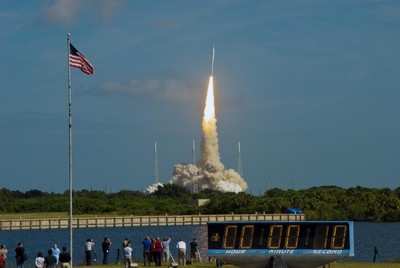
Now, however, there would be no cut-off, no hold and no call of
"red." This time the clock would go to zero and the big solid
fueled first stage would erupt in a brilliant flame that would
rival the Florida sun. Now it was the Ares I-X's turn to prove what
it could do- and it put on a real show.
Tuesday, October 27th, was set as the original launch date for
the Ares I-X. From a cargo ship straying into the danger area to
the soon to be hated call of " triboelectrification," factors
having almost nothing to do with the vehicle would cause the entire
day to dwindle to a scrub on that date. By the following day and
another try at launching the Ares I-X, triboelectrification had
become nearly a curse word at KSC- as in "Go triboelectrification
yourself!"
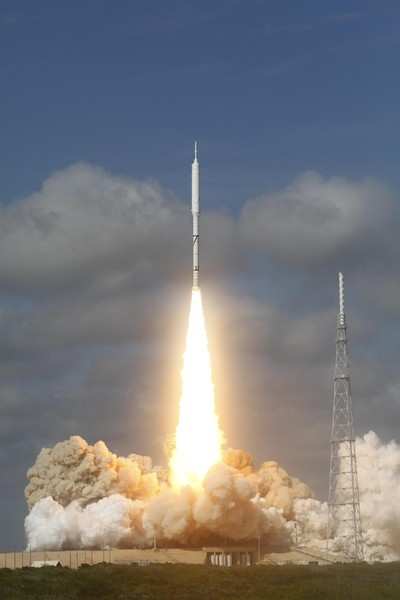
The term, signifying conditions where the vehicle moving through
high altitude icy clouds can build up a static charge that can
interfere with radio signals, actually has nothing to do with
vehicle limitations- in fact it is a Range Safety issue. There was
a concern that if Range Safety needed to transmit the Command
Destruct signal after the vehicle had encountered
triboelectrification conditions, the signal may not get through to
the destruct packages. So, NASA planners simply worked around the
issue by placing a limitation in the launch conditions that would
not allow the Ares I-X to be launched when triboelectrification
conditions existed. That limitation would later come back and
triboelectrification them.
On the second day's attempt at launching the Ares I-X, ocean
freighters were kept clear of the danger area, the weather started
out good and stayed good- with one exception…
triboelectrification. As T-38s flew into the weather areas, which
were thin patches of clouds, the weather calls kept going from
green to red right up to the point where there was just one last
chance for a launch before NASA and the Ares I-X's reservation of
the Eastern Test Range expired for the day, and perhaps for the
next month.
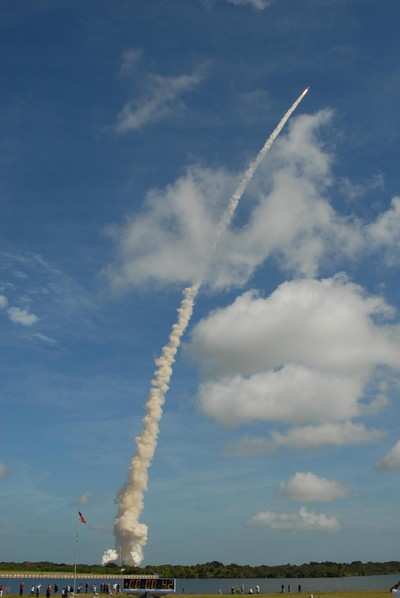
With just 30 minutes left in the range time, the Ares I-X
finally hit zero and roared from the pad. Standing 327 feet tall,
the gleaming white rocket lifted with a grace that was somewhat
slower than most of us expected. It immediately entered into a
programmed yaw or "fly-away maneuver" designed to keep it clear of
the launch tower. Twenty seconds later, and just as the sound began
hitting those who were there to watch, the yaw was complete and the
Ares I-X was punching a hole in the sky.
As the vehicle transitioned through Mach 1 the atmospheric
moisture that was condensed out by the transitional shock wave was
clearly visible to the naked eye. In slightly more than two minutes
the first stage had consumed its propellant, tail-off and burn out
followed. Then, as planned, the stages separated. For the
spectators at KSC as well as those who were in the area watching,
the Ares I-X had put on a terrific show.
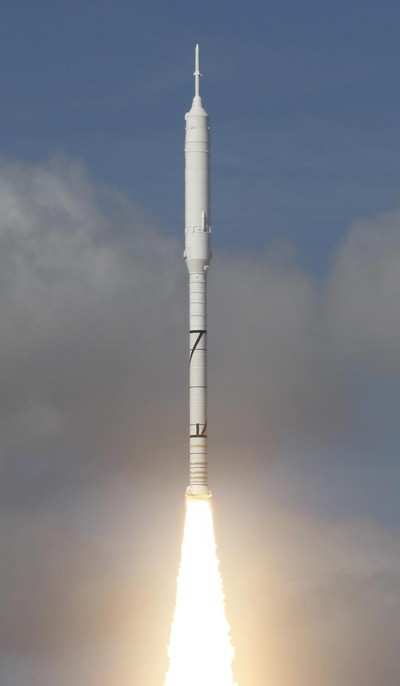
Similar to the previous week's roll-out, even hardcore veterans
of dozens of launches were excited by this launch. It was the
tallest rocket launched by the United States since May of 1973 when
the Skylab Saturn V was launched.
Although the important part of this flight will be the data
gathered and the procedures that have been developed, of almost
equal importance is "the show." The American public, the Congress,
and the office of the President do not understand things such as
thrust oscillation, roll inertia, or even triboelectrification.
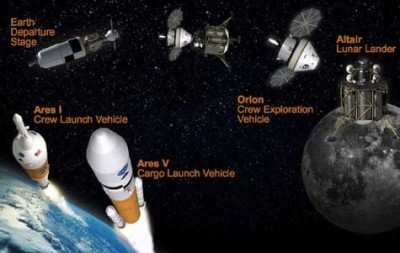
What they DO understand, however, is a new, brilliant white
rocket streaking across the blue Florida sky like an arrow to the
future. In a line from "The Right Stuff" the rhetorical question is
asked, what makes this go up? And the answer is "Funding." Like
everything else in that movie, this is only partly correct. The
real answer is "Funding" and the will of the American people. The
Ares I-X gave the American people a show that they just may
remember.
 ANN's Daily Aero-Term (04.26.24): DETRESFA (Distress Phrase)
ANN's Daily Aero-Term (04.26.24): DETRESFA (Distress Phrase) ANN's Daily Aero-Linx (04.26.24)
ANN's Daily Aero-Linx (04.26.24) Airborne 04.22.24: Rotor X Worsens, Airport Fees 4 FNB?, USMC Drone Pilot
Airborne 04.22.24: Rotor X Worsens, Airport Fees 4 FNB?, USMC Drone Pilot Airborne 04.24.24: INTEGRAL E, Elixir USA, M700 RVSM
Airborne 04.24.24: INTEGRAL E, Elixir USA, M700 RVSM Airborne-NextGen 04.23.24: UAVOS UVH 170, magni650 Engine, World eVTOL Directory
Airborne-NextGen 04.23.24: UAVOS UVH 170, magni650 Engine, World eVTOL Directory







